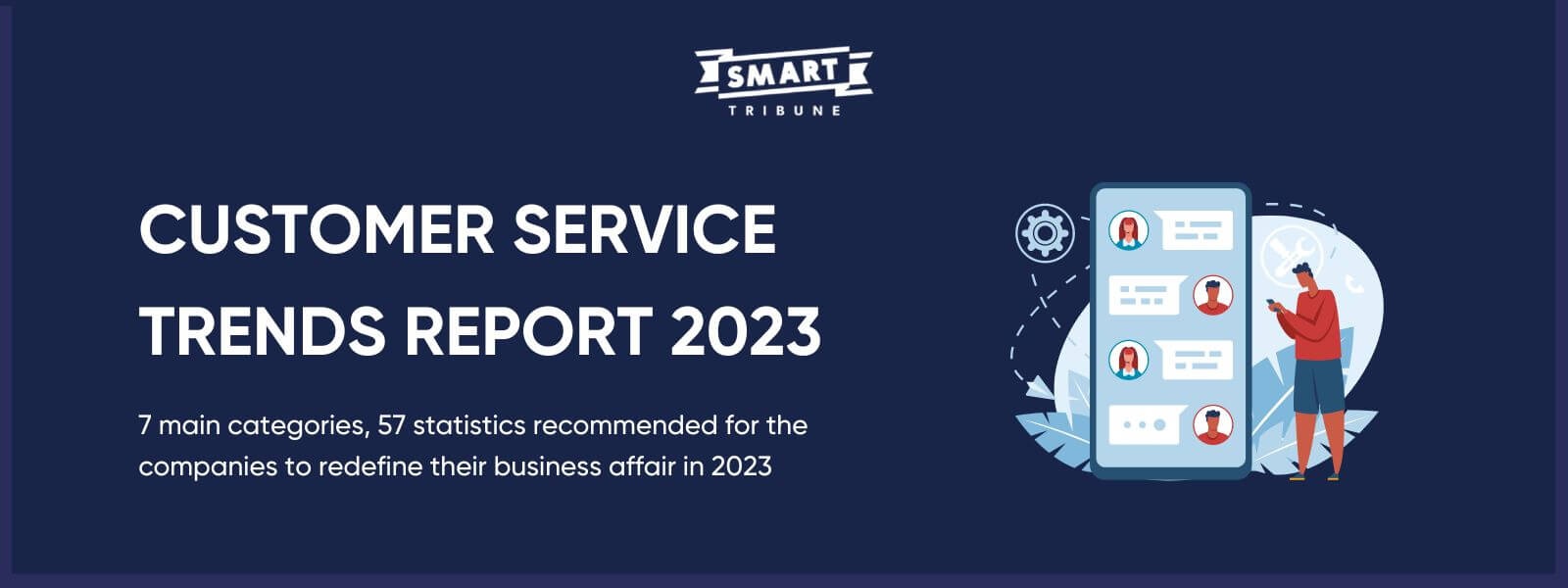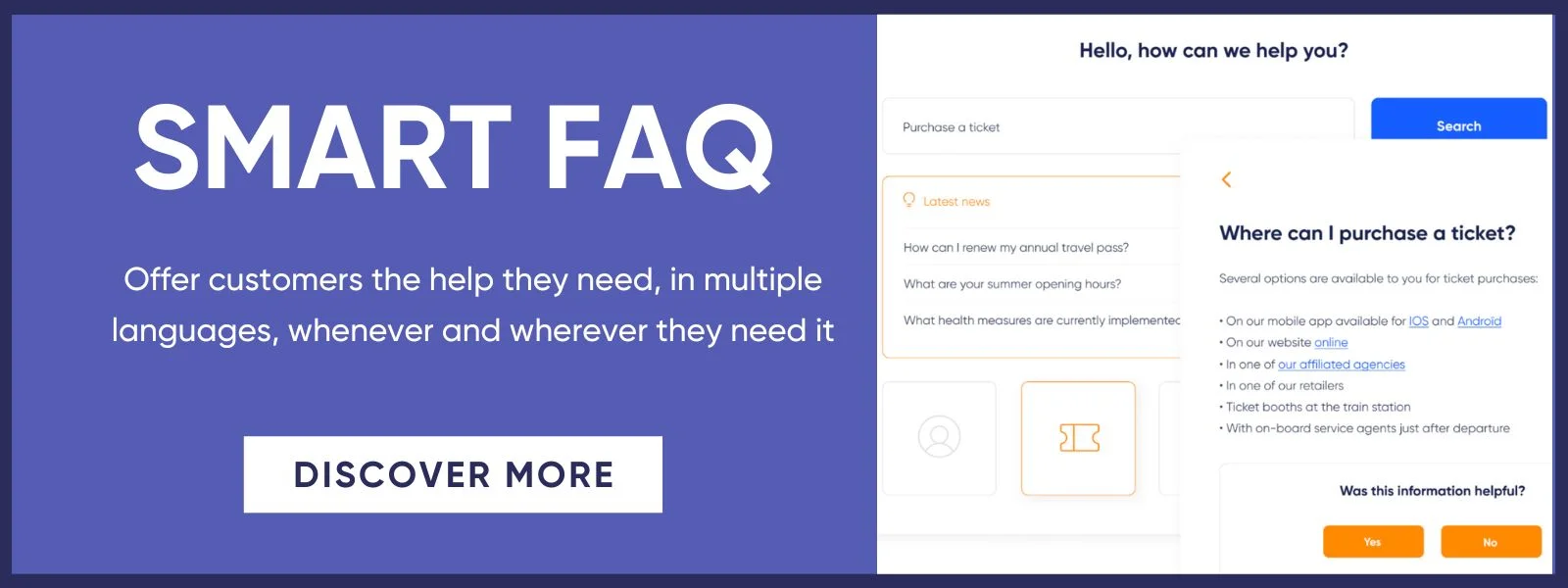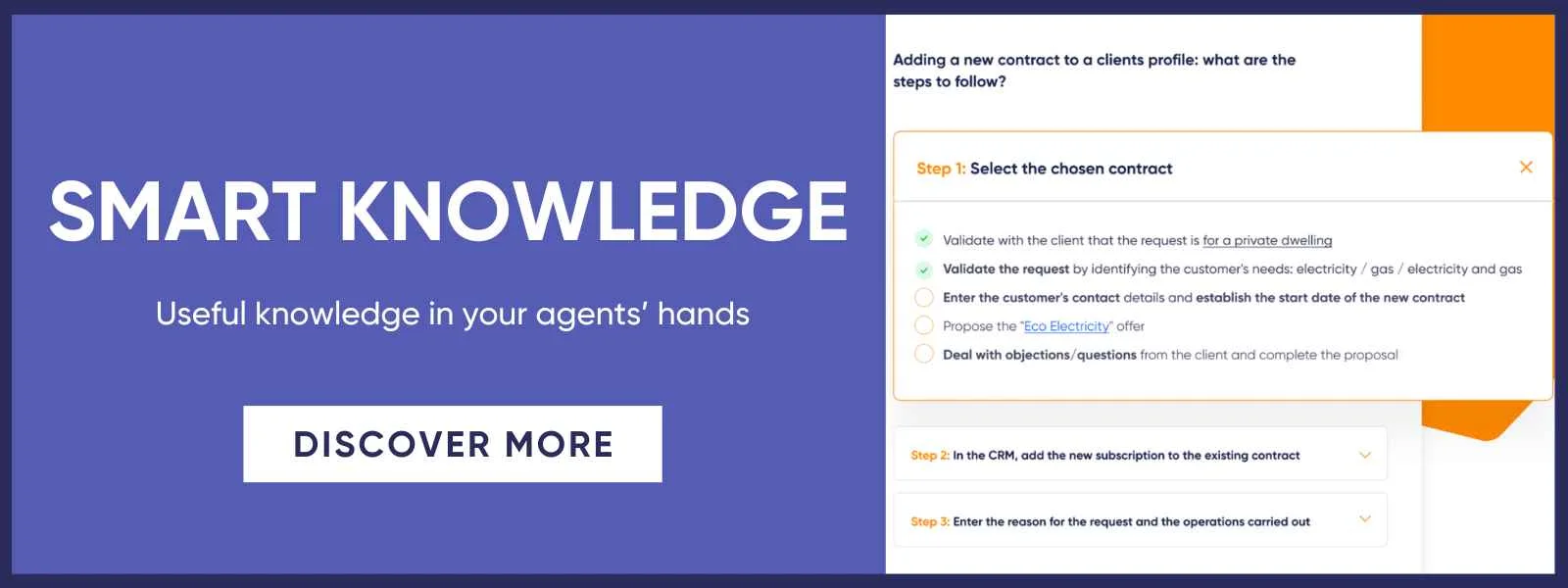
On OCTOBER 26, 2021
8 Common Customer Service Experience Mistakes to Avoid
There are a lot of obstacles in the minefield of customer service experience that even the savviest and most well-intentioned brands can trip over—sometimes without even realising it. But many of these hiccups are easily avoidable when you have the right customer service strategy in place. So, here’s a rundown of the good, the bad, and the ugly of customer service experience, including some tips for how to surprise and delight your customers at every turn.
Table of content
- Why creating a good customer service experience matters
- The most common customer service experience mistakes
- The benefits of a good customer service experience
- Don’t fall prey to common customer service experience pitfalls
Why creating a good customer service experience matters
A great customer service strategy involves a lot more than simply ensuring there’s a friendly and helpful customer service representative on the other end of the line—whether via phone, email, chat, or otherwise—during normal business hours. Today, customers expect brands to be accessible and responsive on all platforms and channels at all hours of the day. In other words, when they need help, they expect you to be there, ready and willing, to help them. These are the absolute “table stakes” of providing a stellar customer service experience. After all, the better customer service you provide, the happier and more loyal your customers will be.
What is the difference between customer experience and customer service?
As a quick recap, ‘customer experience’ refers to the entire multi-channel experience a customer has when interacting with your brand. Customer service, on the other hand, is only one aspect of a broader customer experience strategy, but one of the most important because customer service is typically the only touchpoint that consumers have with brands directly.
Therefore, it’s incumbent upon brands to create a stellar customer experience at all times in order to empower their customers to be more autonomous and self-sufficient throughout the purchase journey. When done right, this can improve customer satisfaction in a big way, reduce contact center enquiry volume, and enable customer service agents to stay much more focused on more complex customer service issues—those requiring their undivided attention.
In short, a great customer service strategy should be:
- Responsive
- Efficient
- Helpful
- Accessible
- Always-On
A great way to take your brand’s customer service experience to the next level is by deploying smart, AI-powered customer self-service solutions—like chatbots, in-context help widgets, and dynamic FAQs—to address customer needs on-the-spot across the entire customer journey.
But implementing these solutions alone, in the absence of a broader and well-thought customer experience strategy, can’t shield you from some of the most common customer service experience mistakes that many brands face today. Keep on reading to learn how to spot these pitfalls—or avoid them entirely—before they wreak havoc on your customer experience.
The most common customer service experience mistakes
Any slip up in the customer experience, whether intentional or purely accidental, can be costly to brands over the near- and long-term. The only way to avoid this is to spot these issues before they become a serious problem. Here are the biggest culprits we’ve seen pop up recently:
1. Not providing a personalised experience
Although privacy and data sharing are hot button issues today, research shows that customers are willing to share some information with companies they trust—that is, as long as sharing that information provides some sort of benefit in return. For example, 56% of customers say they don’t mind sharing personal information in exchange for a better service.
So, if your customers have been so kind as to ‘gift’ you even a snippet of their information, use it to their advantage and make their experience with your brand more unique and personalised than ever before. One great example of this is equipping customer service agents with real-time access to key customer information, including a customer’s purchase history. This information is invaluable as it can help agents either troubleshoot issues more effectively or, if the call is more sales-oriented, provide relevant upsell suggestions.
Taking it one step further, this same information can be fed into intelligent solutions, like chatbots, to create a more personally relevant, yet fully automated customer experience.
The long story short: Failing to adapt the customer experience based on how each and every customer interacts with your brand is a missed opportunity to show them that you value their business but also—and more importantly—to improve conversion over time. Even more, your customers’ behaviours across your site, including the key points that stop them in their tracks from making a purchase, can provide useful insights into how to rethink the path to purchase to ensure that no customer is inadvertently left behind.
2. Not supplying agents with the right tools
Being a customer service agent is no easy task. But it’s a lot harder when you don’t have access to the right tools and resources to resolve customer enquiries as quickly and efficiently as possible. This includes ensuring that agents have one-click access to things like pertinent customer information or the most up-to-date brand and FAQ content.
A Salesforce study found that 51% of agents working without AI-powered tools spend most of their time on mundane tasks. A tool like Smart Tribune’s Smart Knowledge can help avoid this entirely, as it makes it easier for brands to put all relevant information at an agents’ fingertips. Not only does this enable agents to address real-time customer requests more effectively and accurately, but it has also been shown to speed up an agent’s onboarding time. All in all, the more information agents have to work with, the better they can resolve customer issues. At the end of the day, this is a way to minimise unnecessary inefficiencies that, if left unchecked, can have a negative impact on the customer experience.
“The customer experience is the next competitive battleground."
— Jerry Gregoire, Former CIO at Dell
3. Not being proactive with your customers
In most cases, communication overload is never a good thing. Filling your customers’ inboxes with non-stop emails certainly won’t endear your brand to them either. But when it comes to warning customers about potential customer service issues or anything that might impact their experience with your brand, it’s been found that 87% of people would be happy to be contacted in a proactive manner by brands. In fact, taking this kind of initiative—and proactively offering support before more serious issues arise—can increase customer retention rates by 3-5%.
The goal here is to capture customers before they get into a sticky situation, one that could potentially turn them away from your brand for the long-term. Similarly, it’s also a preventative way to minimise the number of customer service requests by either addressing specific issues head-on or providing a means for customers to be more autonomous in their journey. All in all, taking a more proactive approach can help brands create a frictionless experience that keeps customers happy—and cared for—at every step of the way. Simply leaving customers high and dry to deal with issues on their own is a tried-and-true recipe for disaster.
4. Not being available when your customers need you
Even if your brand provides the best products and services in the world, there will inevitably be someone out there who will require some hand-holding (whether good or bad). If you make it unnecessarily difficult for them to get in touch with you, it won’t end well for your brand.
This basically means making it possible for customers to get answers, whether via automated customer self-service solutions or via the help of a customer service agent, whenever they need it at any point along the customer journey. And while there are a lot of things that can easily frustrate customers when reaching out to customer service, 60% find long hold and wait times to be the most frustrating aspect of customer service. But there are ways around this!
If, for example, your customer service agents are only available during normal business hours, then your customers, who often reach out during off-hours, will have to wait a long time to get any sort of response. This is where customer self-service solutions can quickly fill in the gap, ensuring that up to 70% of customers’ most frequently asked questions get addressed and resolved in a timely manner, without needlessly clogging up an agent’s request queue.
And then for those more complicated customer enquiries, customer self-solutions are smart enough to know when they must pass on the request to a living, breathing customer service agent, who can address it during normal business hours. Either way, giving customers multiple options for answering their questions can boost customer satisfaction in a big way.
5. Not listening to customer feedback
Nothing in life is perfect; your brand is not an exception to this rule. There’s always an opportunity for improvement. And fortunately, your customers are a great source of feedback. This applies whether the feedback is positive or negative. The only issue here is that many brands fail to listen and embrace this feedback with open arms.
Of course, you can’t make everyone happy at all times. That’s virtually impossible. But that doesn’t mean you can just ignore customer complaints outright. In fact, a shocking 79% of consumers who have used online channels to complain about a poor customer experience say they were ignored. There could be a number of reasons for this happening. You might not have enough customer service resources to tackle a growing number of requests or complaints. Or you may not yet have a clear way to resolve a specific customer issue.
Whatever the case may be, you shouldn’t take the “out of sight, out of mind” approach here. Simply acknowledging your customers can go a long way, as 57% of consumers who received a response to a complaint had a positive reaction to the company they were complaining about. Remember, we’re all humans and, for better or worse, like a little validation. This is at the very heart of customer relationship management. Your customers just want to be heard.
So be sure to approach feedback from a ‘human’ perspective, using every opportunity you have to learn from what your customers are telling you. After all, you never know when a precious nugget of feedback might actually help transform your business for the better!
70% of unhappy customers whose problems are resolved are willing to shop with a business again.
— Source: Counting the Customer: The Complete Guide to Dynamic Customer Care, Glance
.png?width=500&name=Register%20Now%20(8).png)
6. Not keeping your promises
According to Accenture, 70% of people felt that businesses had promised them something in the last year but only 60% believed the companies had delivered. This is bound to happen because brands, like people, are not perfect—and sometimes things don’t go according to plan.
As a rule of thumb, however, it’s far better to be honest about any limitations your brand might have and show customers how you’re actively working to improve them. That way, you don’t get caught in the rut of over-promising and then under-delivering. Doing so never goes in a brand’s favor and, even worse, can minimise any trust and loyalty built with customers. And depending on the circumstances, this might not be easy or even possible to repair.
7. Not providing timely support
Customer expectations are higher today than ever before. In many cases, this means that when customers need help, they want a brand to be able to resolve their issue immediately and in a way that will provide the greatest benefit to them. Some people might call this ‘instant gratification,’ while others may say it's part and parcel of the digital world we live in.
Either way, today’s customers lack patience; the longer you keep them waiting for anything, the less likely they’ll remain a loyal customer. This is especially relevant to millennials and younger, digital-first generations. In a survey of 16 – 24 year olds, for example, about 71% of them felt that a quick response from a customer service team drastically improves the overall customer experience. Knowing this, it only makes sense for brands to be proactive in providing a way for customers to get answers to their questions around the clock.
While staffing a 24/7 customer service team might not be the most cost-effective or sustainable option for your brand, customer self-service solutions can, once again, add a layer of immediacy and responsiveness to your end-to-end customer service experience that lets your customers know that even if you’re unable to provide an immediate response, someone will soon. This kind of transparency is the key to managing customer expectations today.
8. Not offering omnichannel support
A seamless, frictionless customer service experience, one that can hop from one channel to another, is the holy grail of customer experience today. But the time when this was ‘optional’ is long gone. In fact, Salesforce found that 75% of customers want a consistent experience, no matter how they engage with a company.
This basically means that customers don’t see their experience with your brand as being channel-specific. The channel of their choosing is merely a way to get in contact with your brand. And if they choose to reach out via one channel on one day and then another channel on the next day, for them it’s a single brand experience. For brands, on the other hand, it’s important to know where your customers go to get help and then having a solid presence there.
Taking this one step further, HubSpot also found that 33% of customers say they’re most frustrated by having to repeat themselves multiple times. The same study found that people actually hate repeating themselves so much that 62% of customers would rather do something hideously boring, like hand out parking tickets, than repeating their issue over and over again.
This issue arises when information a customer has already communicated on one channel hasn’t carried over to another customer service interaction now happening on another channel. While this is more about asynchronous communication than it is about simply providing omnichannel support, they both go hand-in-hand. Just offering support on multiple channels doesn’t go far enough; those channels need to be linked together in order to create a seamless customer experience that, again for customers, is essentially channel agnostic.
The benefits of a good customer service experience
Now that we’ve covered all of the things you shouldn’t do when it comes to customer service experience, here are a few important reminders why this really matters for your brand.
- Boost brand loyalty
It costs seven times more to acquire new customers than to nurture existing ones. But did you know that 60% of customers say that good customer service is a vital part of driving brand loyalty? Or that existing customers are 50% more likely to try new products from your business than new customers? While brand loyalty is, in many ways, a reflection of how much your customers love your brand, it’s also good for business.
Providing top-notch customer service is essential for driving and maintaining long-term brand loyalty. This comes at a time when 83% of customers say they feel more loyal to brands that respond to and resolve their issues.
“Every day we’re saying, ‘How can we keep this customer happy?,’ ‘How can we get ahead in innovation by doing this?,’ because if we don’t, somebody else will."
— Bill Gates, Former Microsoft CEO
- Increase profits
A better customer experience, funny enough, makes customers want to buy more. For instance, existing customers are 31% more likely to have a higher average order value while increasing customer retention by just 5% can boost your profits by between 25-95%. Even something as small as improving customer retention by five percent can increase a company’s profitability by up to 75%.
Still not convinced? Sixty-eight percent of customers say they’ll spend more money with a brand that treats them like individuals, understanding what they really want and need. Therefore, putting in the effort to create a more personalised customer service experience can make a significant impact on your business’s bottom line. This literally makes a stellar customer service experience worth its weight in gold.
- Lean into brand advocacy
Over the years, many studies have shown that word-of-mouth (WOM) brand advocacy is not only one of the most influential forms of marketing but also the most cost-effective. In many ways, brand advocacy is a direct byproduct of brands both offering their customers quality products and services and building brand loyalty around a consistently excellent customer experience. The good news here is that customers love to talk about the things they love, with 72% saying that after having a positive experience with a brand, they’ll share it with six or more people. In short, by creating a brand and experience that your customers love—and actually want to support—you make it easy to transform your customers into your greatest sales tools. - Improve customer retention
Now, not everyone is ready or willing to be a vocal brand advocate. And that’s perfectly fine. But their silence doesn’t necessarily make them any less loyal. It just means they show their loyalty in a different way, oftentimes by making repeat purchases. This is why a great overall customer experience is often linked with improved customer retention. In fact, 89% of companies believe that excellent customer service plays a key role in their customer retention strategies. None of this should come as a surprise. After all, if you give your customers a good reason to stick around for the long haul, you essentially give them no reason to deflect—or even think about flirting with the competition.
- Stand out from the competition
Speaking of the competition, it’s important to remember that no brand is an island. There is always either a long-time competitor or a new entrant into the market vying for the attention and loyalty of your customers. And there are different ways to stand out. Some brands compete on price. Others compete on quality or features. In those cases, depending on what customers care about most, the decision around which brand to support might be black and white.
One area where all brands compete on an even playing field today, however, is around customer experience. So much so that a recent Walker study predicts that customer experience will soon overtake key factors like price—and even the products or services you sell—as a brand’s key differentiator. Even more important at a time when it’s been found that, after having only one negative experience, 80% of consumers say they’d be open to doing business with a competitor. Why would you ever want to risk that when all it takes is offering your customers a great experience that makes them forget that the competition even exists?
Don’t fall prey to common customer service experience pitfalls
It goes without saying that providing customers with an excellent customer service experience every time they interact with your brand is likely more important today than ever before. But getting there can be fraught with a flurry of all too common obstacles and pitfalls that can quickly undermine even your most well-intentioned efforts. That’s why, as you begin developing an end-to-end customer experience strategy of your own, you need to ensure that your brand doesn’t fall into the rut of any of the common customer experience mistakes mentioned here.
Fortunately, by knowing exactly what not to do, it becomes a lot easier for brands to focus on what can actually move the needle in a positive way. One easy way to do this is by making smart, AI-powered customer self-service solutions a big part of your customer service strategy.
And if you’re still not convinced that customer experience should be a top priority for your brand today, check out these compelling customer service stats to see why you should.
To learn more about how Smart Tribune’s innovative customer self-service solutions can transform your customer service experience, be sure to schedule a demo today.







.png)



